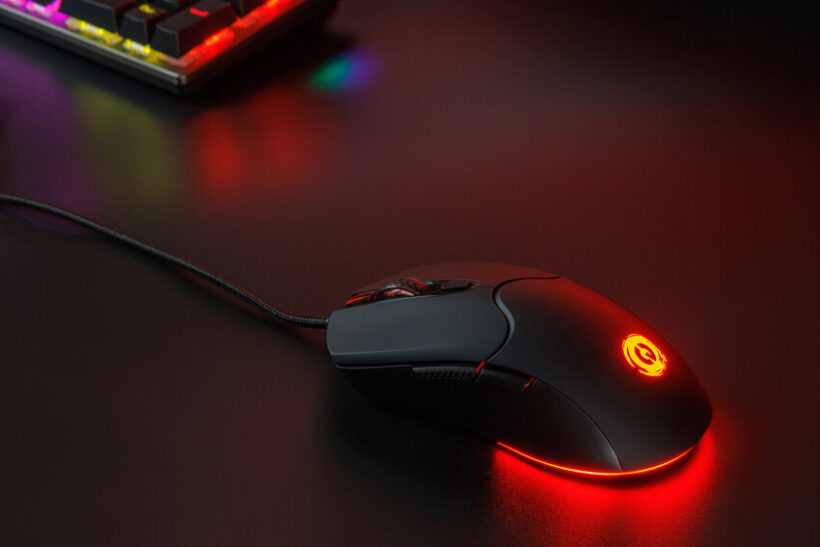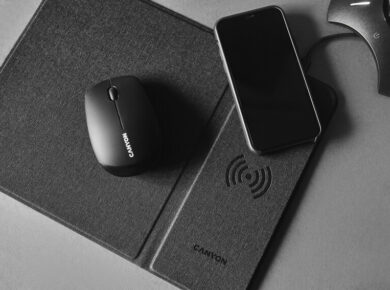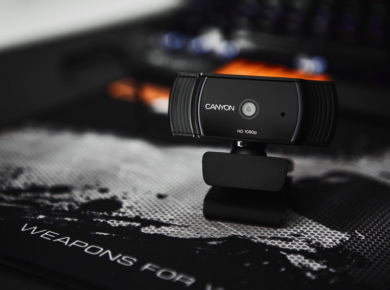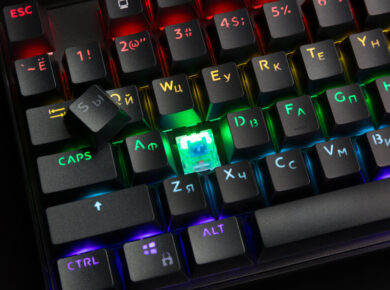Imagine trying to drive a car without a steering wheel – that’s far too chaotic and dangerous. Using a computer without a mouse is similar in a way – it’s like navigating a digital landscape blindfolded. But the device, with its simple point-and-click interface, made computers accessible to everyone from tech-savvy experts to curious beginners and revolutionized how we interact with machines. So, who invented the computer mouse?

The Birth Of The Mouse
The story of the computer mouse invention begins in the mid-1960s at Stanford Research Institute. A visionary engineer named Douglas Engelbart, driven by a desire to enhance human-computer interaction, led a team of researchers on a groundbreaking project. Their goal was to create a more intuitive way to navigate and control computers, moving away from the complex keyboard commands that were the norm at the time.
Engelbart and his team faced several challenges in their quest to develop the computer mouse. One of the biggest hurdles was the limited technology available at the time. Computers were bulky machines with slow processors, and electronic components were expensive and unreliable. Despite these obstacles, Engelbart and his team persevered, fueled by their belief in the potential of their invention.
After years of research and development, Engelbart and his team finally unveiled the first prototype of the computer mouse in 1963. The device was a far cry from the sleek, ergonomic models we know today. It was large and heavy, with a tail-like cord trailing behind. Inside, a mechanical ball rolled on a flat surface, translating the movement into cursor movement on the screen.
Although the early prototypes were crude by today’s standards, they demonstrated the potential of the computer mouse to revolutionize human-computer interaction. Engelbart and his team were confident that their invention would eventually become a standard feature on computers.
Despite the groundbreaking nature of these efforts, the early mouse did not immediately catch on. It wasn’t until the early 1980s, when companies like Apple began including a mouse with their personal computers, that it started to reach a wider audience. Apple’s Lisa computer, released in 1983, was one of the first consumer machines to feature a mouse as a standard accessory. This marked the beginning of the PC mouse history from a niche innovation to an everyday tool found on desks around the world.

The Evolution of the Computer Mouse
The history of computer mice is a story of constant transformation. It all started with a simple, boxy block of wood, equipped with two clunky wheels. This first version, invented by Engelbart, looked more like a wooden toy than a revolutionary piece of technology. But behind the unassuming appearance was a device that would change the way we interact with computers forever.
The 1980s brought the mouse out of research labs and into homes and offices around the world. This was thanks to Apple’s Lisa and the Apple Macintosh, which bundled the mouse with their personal computers. Suddenly, people could point, click, and drag – no complicated commands required. For many, it was a revelation, a new way to interact with technology that felt intuitive and fun. You could almost hear the collective “aha!” as users realized they could navigate their screens with a flick of the wrist.
As computers grew more powerful, so did the mouse. By the 1990s, it got a significant makeover with the optical mouse inventors, Steve Kirsch and Richard Lyon, introducing new technology. Out went the rolling ball, and in came the LED sensors that could track movement without the need for constant cleaning. A sticky ball that refused to roll smoothly wasn’t a struggle anymore; this new generation of mice offered a smoother, more accurate experience.

Then came the 2000s, and with them, a new wave of laser technology that allowed mice to track even the tiniest movements with incredible precision. This advancement was a game-changer for gamers and graphic designers who needed pixel-perfect control. The mouse wasn’t just for clicking links or scrolling through spreadsheets anymore; it became a high-performance tool capable of handling the most demanding tasks.
And let’s not forget the rise of wireless mice, which set users free from the tangled mess of cables on their desks. Now, you could click away from across the room, controlling presentations or browsing your favorite websites without being around your computer. It was a small change that made a big difference in everyday convenience.
Fast forward to today, and the mouse has become more than just a practical device – it’s a highly customizable and ergonomic companion. Manufacturers now design mice with curves that hug your hand, reducing strain and keeping you comfortable during marathon work sessions or gaming nights. Some models come with programmable buttons, allowing you to set shortcuts for your most-used commands. Others have adjustable DPI settings, so you can change the sensitivity of your movements with a simple click and have ultimate control over your cursor.
From wooden blocks to futuristic, ergonomic devices, the computer mouse timeline has come a long way. Despite the rise of touchscreens and voice controls, it has remained a staple of the computing experience, proving that sometimes, even the simplest tools can stand the test of time.

What Makes The Computer Mouse Special
What makes the computer mouse such a standout in a world filled with touch screens, trackpads, and voice commands? Unlike touch screens or trackpads, which are often limited by the size of the surface, the mouse gives users a level of control that feels natural and effortless. From dragging files across a desktop to pinpointing a pixel in a design project, the mouse remains the gold standard for precise input.
Comfort is another major factor that sets the mouse apart. Today’s models are designed with ergonomics in mind, ensuring that users can work or play for hours without discomfort. Unlike trackpads, which can cause wrist strain over time, a well-designed mouse can help maintain a natural hand position, reducing the risk of repetitive strain injuries. For those who spend long hours at the computer, this can be a life-changer.
Despite the rise of new input technologies, the mouse has held its ground for one simple reason: it’s reliable. It just works, whether you’re using a traditional desktop setup or connecting wirelessly to a tablet. And while newer options like voice commands and touchscreens have their place, they can’t quite replace the simplicity of clicking and dragging with a mouse.

Investing in a Mouse: What to Consider
When it comes to buying a computer mouse, there’s a surprising variety of options to choose from, each designed to meet different needs. Finding the right mouse means considering the key factors that can make a big difference to you personally.
First, think about ergonomics. For those who spend long hours at the computer, choosing a mouse with an ergonomic design can help prevent discomfort over time. Look for models with a contoured shape that fits the natural curve of your hand, allowing for a relaxed grip during use.
Next, consider sensitivity, measured in DPI (Dots Per Inch). A higher DPI means the mouse is more sensitive to movement, which is ideal for tasks that require precision, like graphic design or gaming. Many modern mice come with adjustable DPI settings, so you can switch between high sensitivity for rapid movements and lower sensitivity for more precise control.
The decision between wired and wireless is also important. A wireless mouse offers greater flexibility, allowing you to work or game without being tethered to a cable. However, a wired mouse might be preferred by those who prioritize a stable, lag-free connection, especially in competitive gaming environments.
Finally, customization is a bonus feature that can boost productivity. Some mice come with programmable buttons, enabling users to assign functions or shortcuts, making it easier to navigate through software or streamline repetitive tasks.
Investing in the right mouse can elevate your computing experience, turning a simple point-and-click device into a powerful tool that’s tailored to your needs.

Conclusion: The Mouse, Past and Future
The computer mouse is more than just a tool; it has changed our interaction with technology. From its early prototype to the sleek, ergonomic designs of today, the mouse has adapted to meet user needs across various fields. Its precision, comfort, and versatility distinguish it from modern alternatives, making it indispensable for gamers, professionals, and casual users. As the world evolves, so will the mouse. That’s why investing in a quality device not only enhances your daily tech experience but also connects you to a rich history of innovation.








